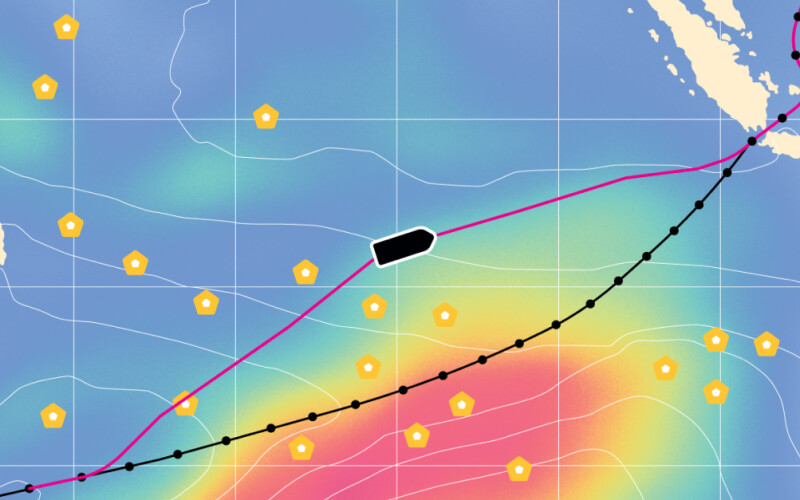Maritime technology company, Sofar Ocean, San Francisco, recently announced a partnership with the U.S. Naval Meteorology and Oceanography Command’s (CNMOC) Fleet Weather Centers in Norfolk, Va. (FWC-N) and San Diego, Calif. The Navy will pilot Sofar’s Wayfinder platform to enhance routing for naval vessels operating at sea.
The Fleet Weather Centers, which provide weather forecasting and routing support for the U.S. Navy, will utilize the Wayfinder platform to assist in identifying safe and efficient routes for Military Sealift Command (MSC) ships. The platform will integrate real-time ocean weather data from Sofar’s global network of spotter buoys, which help to minimize weather uncertainties and support more accurate route optimization, a Sofar press release said.
The partnership is part of a five-year Cooperative Research and Development Agreement (CRADA) signed in July 2023 between CNMOC and Sofar Ocean. The platform automates many of the manual tasks typically performed by forecasters and routers, generating forecasts along a vessel’s route. This helps reduce the time spent manually creating vessel-specific guidance and allows for more efficient decision-making, the statement noted.
Wayfinder’s use of real-time wave and weather observations allows Navy personnel to validate forecast models and explore different routing options more efficiently. Sofar states this technology streamlines a traditionally complex process, offering benefits not only for current naval operations but also for future fleet expansion, including experimental and autonomous vessels.
Tim Janssen, co-founder and CEO of Sofar Ocean, emphasized the role of Wayfinder in supporting the Navy’s operations. “Wayfinder will empower the Navy to enhance situational awareness at sea and leverage data-driven optimization to continuously identify safe and efficient routing strategies. Powered by our real-time ocean weather sensor network, Wayfinder will help the Navy scale its routing operations to support a heterogeneous fleet operating in conditions made more extreme by the effects of climate change.”





